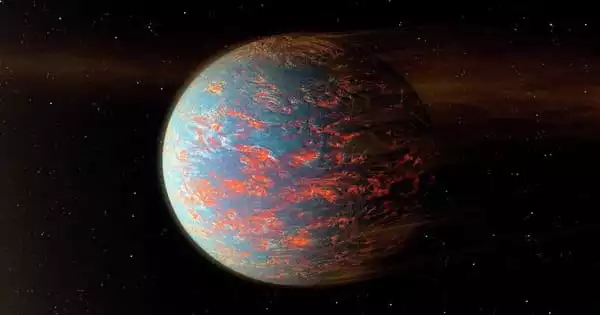Astronomers at the University of Michigan have now published the most in-depth photos yet of a planet-forming disk’s inner area.
The photos, which like dusty infrared donuts, match unusual inner emissions found in earlier research and reveal surprising moving features in the disk surrounding a young, massive star called V1295 Aquilae. The star is 900 times as bright and six times as massive as the sun. It’s only 100,000 years old; the sun is 4.5 billion years old.
Noura Ibrahim, U-M doctoral candidate in astronomy and first author, discusses the study’s findings that are published in The Astrophysical Journal.
Why should we examine young stars?
We have a rare opportunity to watch how star systems emerge thanks to young stars. Even the formation of systems that resemble our solar system is not fully understood.
The search for exoplanets planets outside of our solar system has increased dramatically since the deployment of the James Webb Space Telescope and the Transiting Exoplanet Survey Satellite mission.
Over 5,000 confirmed exoplanets and over 6,000 prospective candidates that don’t match what we see in our solar system have already been discovered. We are interested in studying the early stages of planet formation and the regions where future planetary development will take place.
Why are these particular findings important?
The circumstellar disks can only be examined at such minute scales with the technology that we are utilizing, which is the first and only one. Our simulations and photos indicated a more complicated narrative with potential moving parts and internal emissions, which raises more issues.
Also, we are demonstrating the power of interferometry (using two or more telescopes that work together) to perform cutting edge science at a fraction of the price of space telescopes, which can’t compare with our 50 times better resolution.
How does this paper advance the science and understanding of this field?
We are studying protoplanetary disks with interferometry, which is a fairly vast subfield to begin with. These disks support planet formation and eventually develop into whole star systems that, while not identical to our solar system, share several characteristics with it.
Until recently, we have only been able to image the outer disks using Hubble, ALMA, Keck or VLT observatories, but the inner disk remained a mystery.
How did you image these inner disks?
We can only employ long-baseline optical interferometry to reach the required resolving power. In order for interferometry to function, a number of telescopes must be placed a specific distance apart from one another.
We employ the world’s largest optical and infrared interferometer, the Center for High Angular Resolution Astronomy Array. The CHARA Array consists of six one meter telescopes arranged in a Y-formation which allows for a maximum resolving power equivalent to a single 331 meter diameter telescope. That’s bigger than The Big House the U-M stadium.
Our U-M team, led by Professor John Monnier, has designed, built and commissioned multiple infrared light combiners at the CHARA Array, which combine the light from all six telescopes simultaneously in different wavelength bands. In 2018, the team updated the Michigan InfraRed Combiner (MIRC-X) to add a state-of-the-art sensitive camera that can detect faint infrared light from the dusty disks.
When I joined the U-M astronomy Ph.D. program in 2020, I was able to start analyzing observations taken with MIRC-X in 2019 right away. V1295 Aql is over 900 times brighter than the sun, which is not immediately apparent from this distance on Earth, and its enormous luminosity made it an excellent target for our modeling and imaging objectives. I honestly felt a little spoiled, because of how beautiful the data were.
Did anything about these findings challenge conventional wisdom?
The “cavity” between where the dusty disk finishes and the star was thought to not be all that dark in earlier theories of inner disk emissions. We already know that the hollow contains a transparent gas that is free of dust and does not emit infrared light.
The dust in the disk we see glows in infrared radiation because it is being heated by the star. Theoretically, since the dust is destroyed at a particular temperature when the heat is too great for it to resist, we shouldn’t observe any emission from the center. The question of what is causing the opacity that is emitting light is raised by the fact that we can see light coming from the center.
















